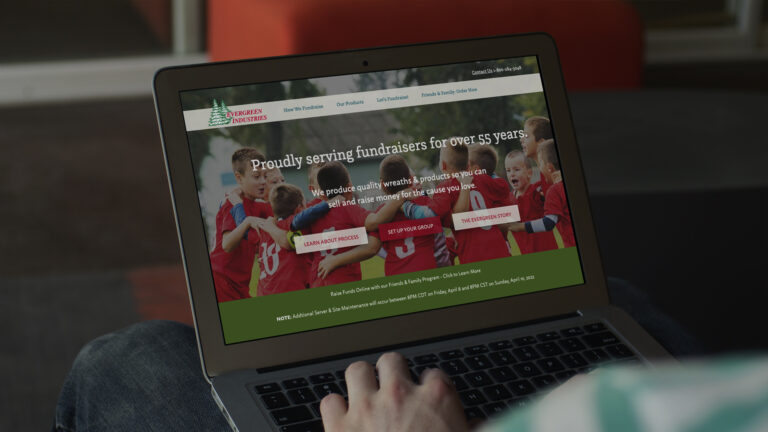Athletic programs nationwide struggle with escalating costs that extend well beyond equipment and uniforms. From transportation expenses for away competitions to facility maintenance and coaching staff compensation, the financial demands of running successful sports programs continue to grow exponentially. This reality makes implementing effective sports fundraisers absolutely critical for teams at every competitive level.
Whether you’re managing a youth league team or overseeing a high school athletic department, understanding the best fundraisers for sports teams can transform your program from financially stressed to financially secure. The difference often lies not in the amount of money available, but in the strategic approach to generating sustainable revenue streams.
Why Fundraising is Critical for Sports Teams
Today’s athletic programs require substantial financial investment to remain competitive and provide meaningful experiences for participants. The importance of securing adequate funding impacts every aspect of team operations and directly influences athlete development opportunities.
Equipment and Safety Investment
Modern sports equipment represents a significant ongoing expense that directly affects player safety and performance outcomes. Quality protective gear, training equipment, and uniforms create substantial budget pressures for most programs.
Travel and Competition Expenses
Competitive athletics demands participation in tournaments, away games, and championship events that often require extensive travel. Transportation costs, accommodation expenses, and meal allowances can create insurmountable financial barriers for many talented athletes. Strategic fundraising eliminates these obstacles and ensures equal access to competitive opportunities.
Inclusive Participation Opportunities
Financial accessibility remains fundamental to building strong, diverse athletic programs. Robust fundraising initiatives create pathways for athletes from various economic backgrounds to participate fully in team activities without financial stress on their families. This inclusivity strengthens team chemistry and ensures merit-based roster decisions.
Enhanced Training Resources
Investment in coaching education, specialized training equipment, and facility improvements directly correlates with improved team performance. Sports team fundraising online has opened new possibilities for securing resources that support professional development and advanced training methodologies.
Top Proven Fundraising Strategies for Sports Teams
1. Implement Seasonal Product Sales
Seasonal fundraising campaigns leverage established consumer purchasing patterns during peak buying periods. Product sales during holiday seasons tap into existing market demand while providing teams with attractive profit margins and manageable logistics.
Wreath sales, holiday decorations, and seasonal gift items work particularly well because customers purchase products they already intend to buy. This approach makes the sales process more natural and less intrusive than traditional fundraising requests.
Begin promotional efforts well before peak demand periods and emphasize product quality and unique features. Partner with reliable suppliers who guarantee delivery schedules and maintain consistent product standards throughout the campaign.
2. Organize Sports Auctions
Auction events generate significant excitement while providing opportunities for substantial revenue generation through competitive bidding. The growth of fundraising ideas for youth sports teams has made virtual auctions increasingly popular, expanding potential bidder participation beyond local geographic boundaries.
Successful auction planning begins months in advance with systematic donation solicitation from local businesses, alumni networks, professional athletes, and community leaders. Sports memorabilia, unique experiences, and professional services typically generate the highest bidding activity and revenue results.
Combine physical and digital auction formats to maximize participation opportunities. Use professional auction software platforms that support mobile bidding, automated outreach, and real-time bid tracking to enhance the bidding experience.
3. Host Community Fitness Events
Fitness-based fundraising events align perfectly with athletic program values while appealing to broad community participation across age groups and fitness levels. Fun runs, walkathons, and fitness challenges create engaging experiences that combine fundraising goals with health and wellness promotion.
These events accommodate participants of various abilities while creating opportunities for meaningful community connections. The pledge-based format allows participants to leverage their personal networks for additional fundraising support beyond entry fees.
Successful fitness events require careful attention to safety protocols, route planning, permit acquisition, and participant experience management. Create engaging marketing campaigns that emphasize both the fitness and fundraising aspects of participation.
4. Execute Team Car Wash Events
Car wash fundraisers are consistently popular because they offer immediate and tangible value to customers while requiring minimal upfront costs for teams.
Hands-on involvement from team members creates direct interaction with community supporters, helping to build personal connections that last beyond a single transaction.
Location selection is crucial:
- Choose high-traffic areas with good visibility.
- Ensure easy accessibility and convenient entry/exit points.
- Check for proper water supply, good drainage, and sufficient parking space to enhance customer experience.
Expand your service offerings to maximize profits:
- Offer interior cleaning in addition to exterior washing.
- Provide add-on services like tire treatments and premium detailing packages.
- This strategy increases the average transaction amount and offers more complete vehicle care to customers.
5. Launch Digital Fitness Challenges
Virtual fundraising platforms have revolutionized team engagement capabilities, allowing supporters to participate regardless of geographic location or schedule constraints. Digital fitness challenges combine personal wellness goals with fundraising objectives, creating win-win scenarios for participants and teams.
Design challenge parameters that accommodate various fitness levels while maintaining engagement throughout extended campaign periods. Utilize fitness tracking applications and social media integration to maintain visibility and sustain momentum throughout the fundraising period.
This approach works exceptionally well as one of the best way to raise money for sports teams because it leverages social media’s viral potential and peer-to-peer fundraising techniques that expand reach exponentially.
6. Develop Branded Merchandise Sales
Team merchandise creates ongoing revenue opportunities while building brand identity and supporter loyalty. Unlike single-event fundraisers, merchandise sales continue throughout seasons and beyond, providing consistent income streams with manageable operational requirements.
Product selection should balance profit margins with customer appeal and practical utility. Research current trends and seasonal demand variations to optimize inventory decisions. Online sales platforms expand market reach significantly beyond local supporter bases and operate continuously without requiring constant active management.
Quality products featuring attractive, professional designs often become treasured souvenirs that maintain their value and continue promoting team visibility long after initial purchase.
7. Conduct Skills Training Clinics
Educational fundraising events offer real value to participants by combining skill-building with community engagement, while also highlighting the team’s expertise and leadership.
Skills attract young athletes and their families, creating built-in audiences for future fundraising campaigns and team program promotions.
These events strengthen the team’s community presence by:
- Providing age-appropriate coaching.
- Generating revenue through registration fees.
- Increasing income via equipment sales and program enrollments.
Safety and quality are key:
- Always implement age-appropriate instruction.
- Follow comprehensive safety protocols for a successful experience.
Effective promotion strategies include:
- Marketing through schools, youth leagues, and recreational organizations.
- Utilizing social media to reach families and sports communities.
- Forming partnerships with local facilities to cut down on costs and increase event capacity.
8. Partner with Local Restaurants
Restaurant fundraising events create enjoyable community gathering opportunities while supporting local businesses and requiring minimal organizational effort from teams. These partnerships provide social experiences that strengthen team relationships while generating funds through percentage-based revenue sharing.
Select restaurant partners based on capacity, convenient location, willingness to provide meaningful donation percentages, and alignment with team values. Establish clear agreements regarding promotional responsibilities, donation calculations, and payment schedules before event promotion begins.
Schedule events during typically slower periods for restaurants to maximize their cooperation and increase donation percentage possibilities.
Conclusion
Successful athletic programs understand that effective fundraising extends far beyond simple money collection, it builds lasting community connections, develops valuable life skills in participants, and creates sustainable support systems that benefit programs for years.
Start with fundraising methods that match your team’s current capabilities and resources, then gradually expand your portfolio as you gain experience and build community support. Remember that consistent effort, clear communication, and genuine appreciation for supporter contributions are essential elements of long-term fundraising success.
Transform your team’s financial foundation today by implementing these proven strategies and watch your program thrive both competitively and financially.




